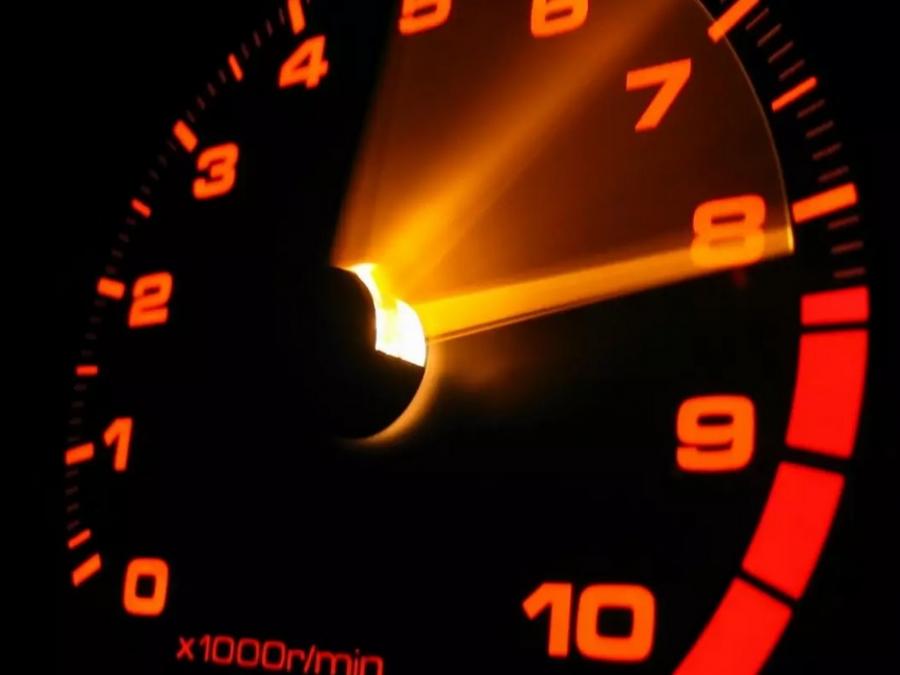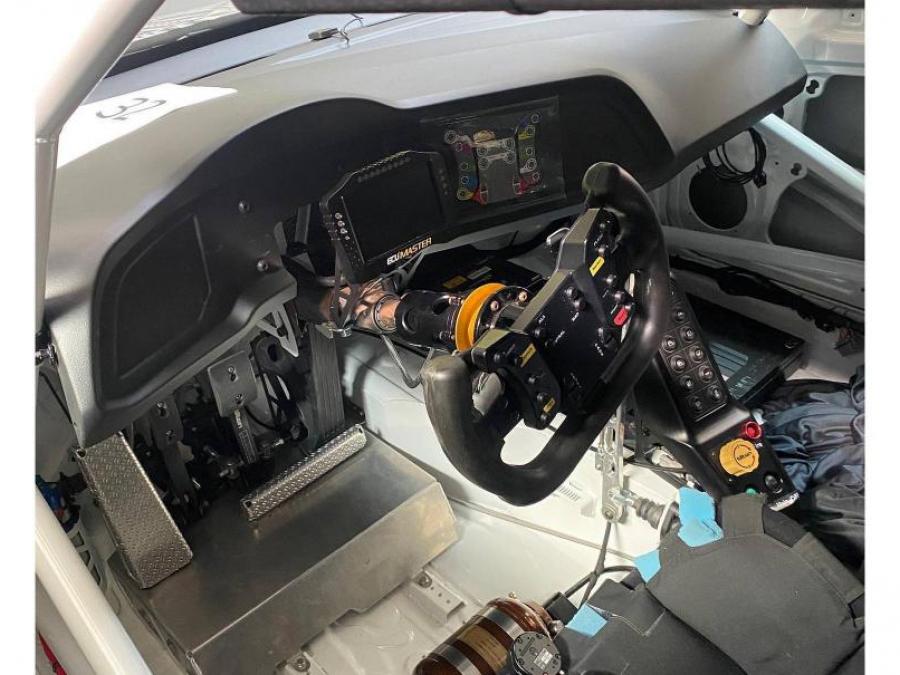
Many motorists are sure that not only the condition of the engine, but also the resource of transport depends on the speed. This belief is true, since the driving style directly affects the condition of the main components and assemblies. To avoid a quick failure of the engine, you should adhere to the optimal speed in motion.
The danger to the engine is the operation of the car, in which the tachometer needle enters the red zone. In this case, accelerated wear of the power plant is noted. Engine oil begins to lubricate moving parts much worse, and in the future, overheating of the installation may occur.
Despite this, experts recommend periodically letting the engine run at high speeds. This allows you to create a load and additionally clean the internal systems from deposits. It is enough to drive 5-10 km on the highway at high speeds to remove carbon deposits and coking inside the motor.
The downside is constant driving at low revs. This mode of operation also does not benefit the vehicle. Many motorists adhere to this decision and deliberately keep the speed at 2000 per minute. This allows you to reduce fuel consumption. In this mode, the power unit is loaded even more.
The fact is that when driving at low speeds, it is impossible to achieve the correct formation of the fuel mixture. Various deposits may appear on the surface of the cylinders and pistons, which adversely affect the performance of the motor. In addition, at low speeds, defects with the movement of the lubricant composition are noted. This is due to the peculiarities of the rotation of the crankshaft and the reduced level of pressure in the system. Therefore, it is not worth moving at low speeds on an ongoing basis, as this will not help save the motor resource.
In each case, the optimal speed may differ. For example, diesel engines are considered low-speed, so they have a maximum thrust at the level of 2000 - 2500 rpm. The gasoline turbo engine produces a maximum of 3000 - 3500 rpm. Experts agree that it is necessary to adhere to indicators in the range of 2500 - 3000 rpm on an ongoing basis.

In America, a prototype of the eighth generation ring Volkswagen Golf TCR was lit up.
The museum division of Volkswagen Classic showed the racing version of the eighth generation Golf hatchback for the first time in public. The car was almost ready, but dieselgate prevented its launch into small-scale production.
A unique Volkswagen Classic racing Golf TCR was shown at the L'oe Show in Pennsylvania. The auto show is dedicated to Volkswagen, Audi, Porsche and other brands that are part of the VW concern. Unlike the legendary gathering on Lake Wörthersee in Austria, this is only the second time the American festival has been held.
The eighth generation racing Golf was created by Volkswagen Motorsport in Hannover under the rules of the popular international TCR series. It was supposed to replace the successful seventh generation TCR Golf.
Recall that these cars were equipped with a two-liter EA888 engine with a capacity of 340-350 horsepower and two types of gearboxes: a DSG “robot” or a sequential-type Sadev racing unit. Outwardly, they are easy to identify by the body extended by 15 centimeters. Since 2016, more than 100 cars worth from 95,000 euros have been manually built - by the standards of racing technology, this is a large circulation.
Small-scale production of the eighth generation car was supposed to start in 2021, but this did not happen: in December 2020, following the results of the diesel gate, Volkswagen management decided to stop all racing projects not related to electric vehicles.
But a test copy of the racing Golf was kept in the vaults of the Volkswagen Classic division. On this machine, the units were tested in racing conditions, the settings of the chassis and on-board electronics were verified. Since the car participated in sea trials on racetracks, the body was covered with a camouflage film with a camouflage pattern. The sticker has been preserved ever since. And the attentive reader will notice that inside the prototype there is a dashboard from the Seat Leon Cupra.
By the way, along with the ring Golf, a unique example of the third generation rally Golf was brought to America from the museum - this all-wheel drive with the A59 index was created for the World Rally Championship in the early 90s, but the project was canceled at the last moment due to financial problems. A detailed article about this car "Motor" published a few years ago.

The circulation of the hatchback Maturo Stradale will be 10 copies.
The Dutch company Maturo Competition Cars introduced the Lancia Delta Integrale restomod based on the cars of the rally Group A. It received a reinforced body, a 360-horsepower engine, a recalibrated suspension on Intrax components and an all-wheel drive with three differentials. The circulation of the hatchback Maturo Stradale will be 10 copies. The price is still unknown.
It seems that the laurels of Eugenio Amos, who elevated Lancia Delta Integrale restomodas to the rank of art, haunt many. After all, it was after the appearance of Futurista that the French GCK Exclusiv-e, and now the Dutch Maturo Competition Cars, presented their projects to resurrect the rally legend. In all these cases, we are talking about small series - from 10 to 36 copies. And a great price. For example, Automobili Amos restomod costs about 300,000 euros.
But if the Italians bribe with a three-door body, which the original Delta never had, and the French with an electric power plant, then in the Netherlands they decided to make restomods based on the cars of the rally Group A. The Delta Integrale 16V becomes the source, as in the case of the Futurista. These machines, unlike the Evoluzione, are easy to find for relatively little money. Each is taken apart to the screw. The body is reinforced with 250 spot welds and a roll cage, then epoxy primed and painted.
The outer panels of the Maturo Stradale are made of carbon fiber - this saves 50 kilograms of weight. The interior combines elements from road cars and Group A vehicles, although overall it remains recognizable. Regular seats are replaced with bucket seats, the steering wheel is from Abarth. The dashboard retained the spirit of the 90s, but assembled on modern components. The main finishing materials are carbon fiber, anodized aluminum, leather and faux suede.
Under the hood of the restomod there is a “turbo four” 2.0, as close as possible to the engines of Group A cars. The internal combustion engine received a turbocharger with new “insides”, other camshafts, pistons, connecting rods and fuel injectors. Boost pressure is increased from 1.2 to 1.8 bar, so the return is 360 forces and 500 Nm of torque. The motor is combined with a reinforced five-speed “mechanics”. But for the “gourmets” there is an alternative: a dog-leg box with spur gears that allows you to shift gears without depressing the clutch.
The all-wheel drive scheme remained the same. However, there are new cross-axle limited-slip differentials and a center differential with a viscous coupling lock. The axle shafts and shafts are made of special steel and can be twisted up to 40 degrees without deformation. The suspension uses Intrax adjustable struts with ARC technology to reduce unwanted body roll. Thanks to it, you can put softer springs, which improves the mechanical engagement of the wheels. Brakes - without booster, like on racing cars.
In total, Maturo Competition Cars is going to build 10 restomods. The price is still unknown.















